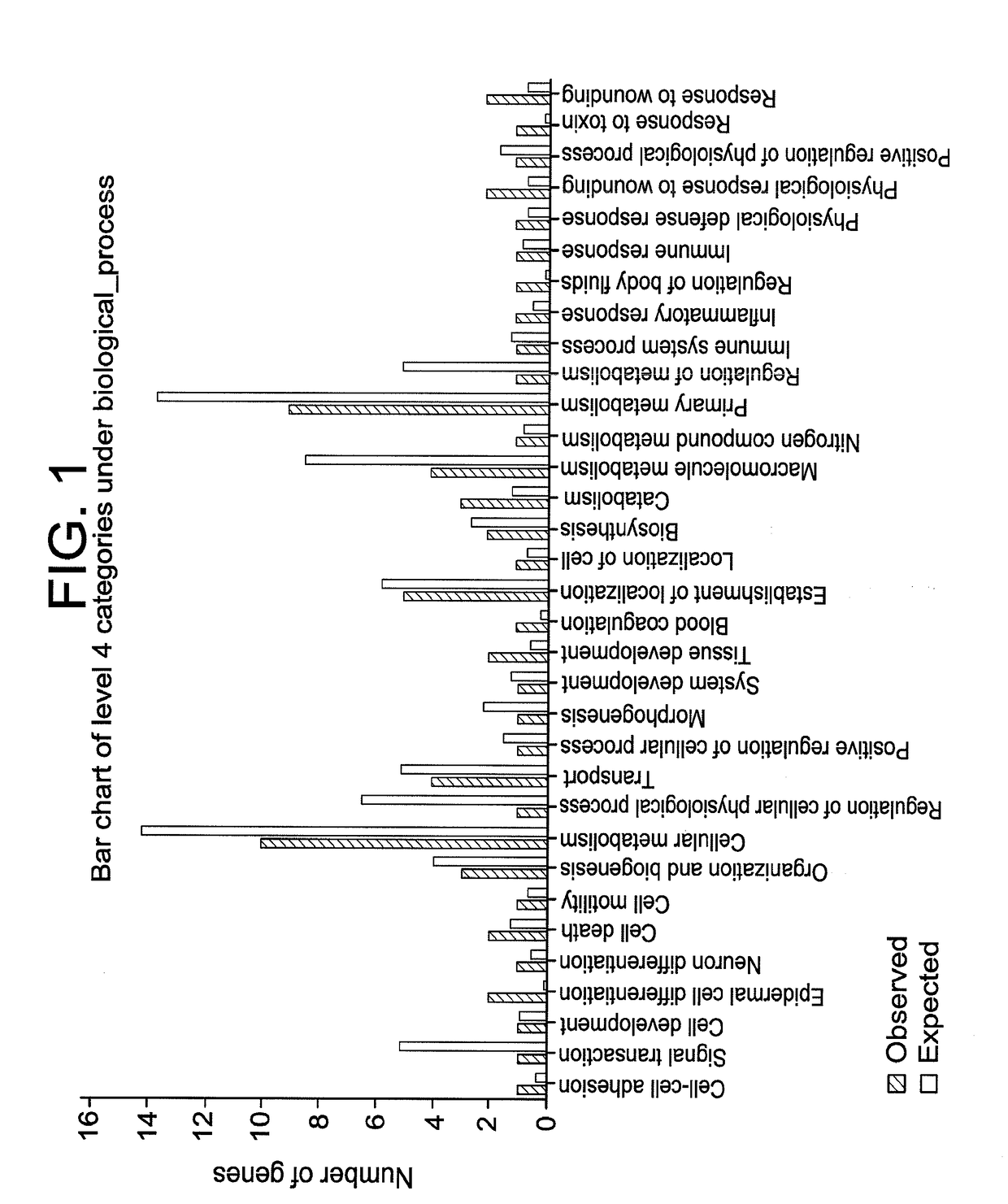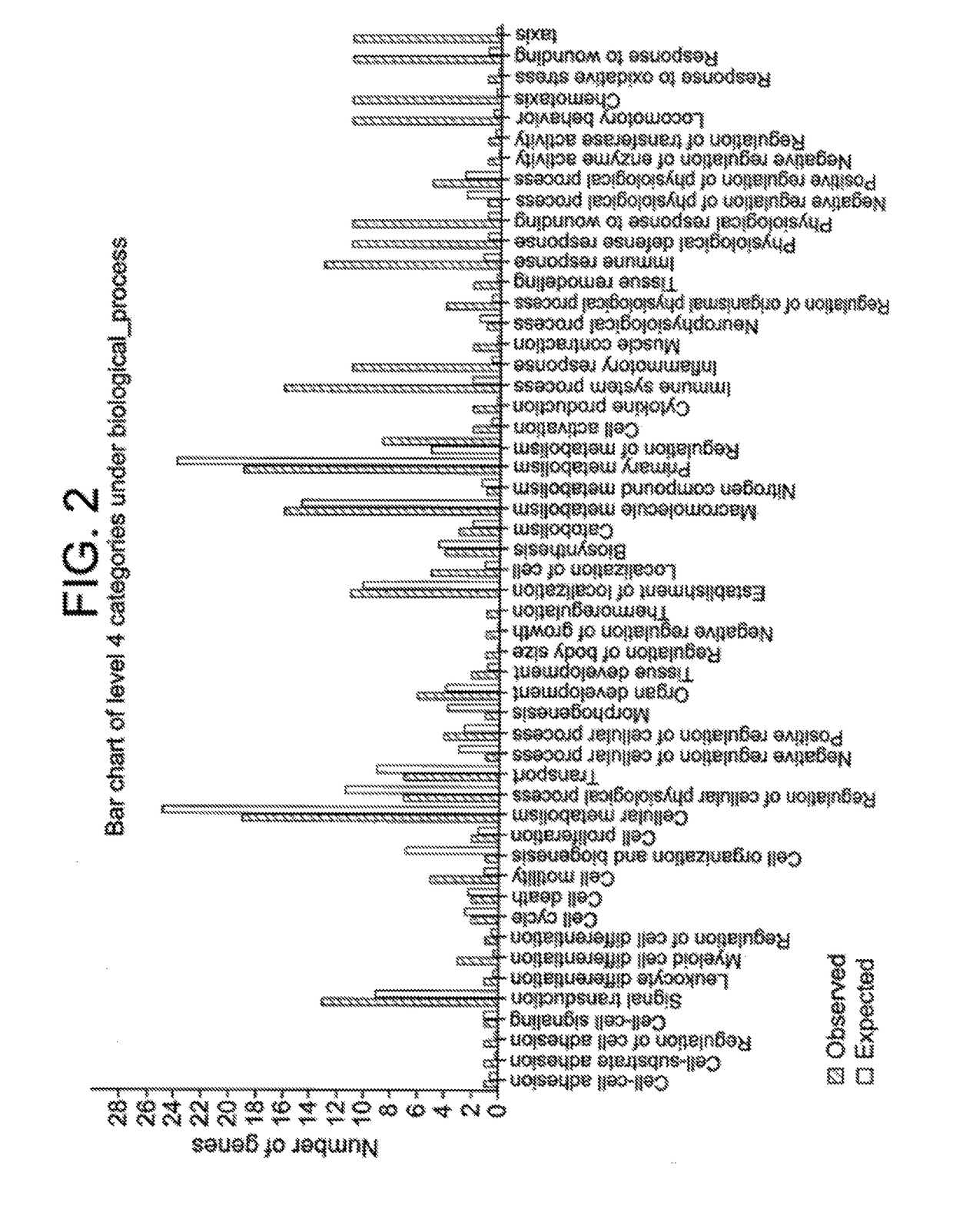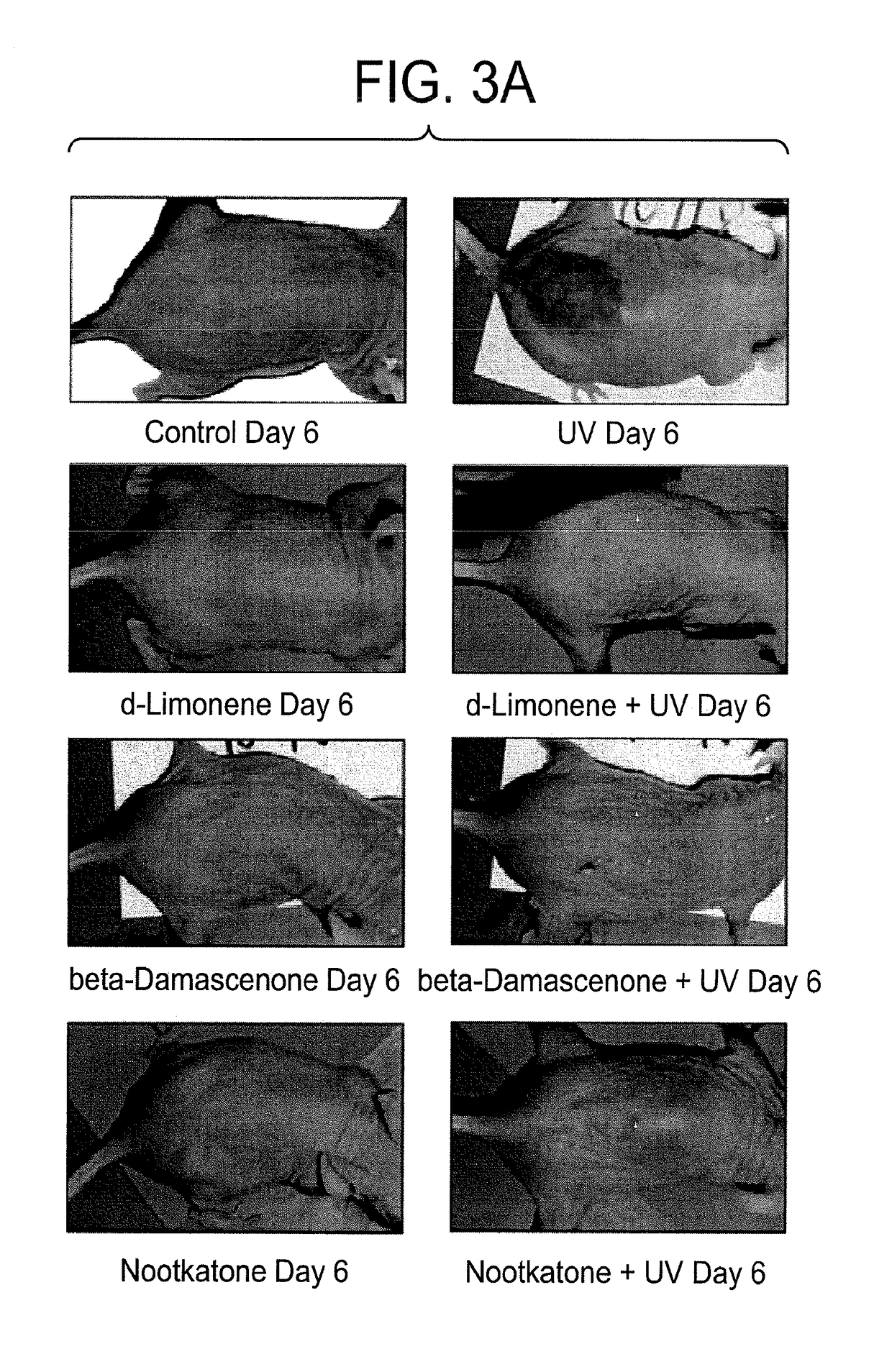Compositions and methods for restoring the stratum corneum and treating dermatological diseases
a technology of stratum corneum and stratum corneum, which is applied in the direction of hydroxy compound active ingredients, medical preparations, pharmaceutical active ingredients, etc., can solve the problems of increased risk of infection, and increased risk of retinoids, so as to reduce the number or the size of breaches, restore the stratum corneum and the stratum corneum, and reduce the effect of the number or the size of the breach
- Summary
- Abstract
- Description
- Claims
- Application Information
AI Technical Summary
Benefits of technology
Problems solved by technology
Method used
Image
Examples
example 1
[0072]A pharmaceutical or dietary supplement form may be made by conventional procedures known in the industry that is by mixing active compounds with edible acceptable solid or liquid carriers or excipients in any form capsules, tablets, dragees, saches, films, powders, lozenges, syrups, liquid suspensions, emulsions and solutions in a convenient dosage form. Three different formulations of terpenes were made for oral usage and two formulations for topical application. Effective amount of terpene is needed to provide protection against UVR. Generally, an effective amount of the oral formulation is taken per day for the duration of 1-7 days prior to the UVR, or more preferably 3-4 days, in association with a carrier, and particularly one in which the active ingredients are soluble per se or are effectively solubilized (e.g. as an emulsion or microemulsion). The terpenes may be administered in the amounts ranging from about 0.6 mg to about 80 mg per kilogram of body weight per day, m...
example 2
Research Design
[0089]Experiments will be performed to establish in SKH1 hairless mouse skin how gene expression alterations based on custom expression microarrays, sunburn severity and cancer induction depend on the quantity of the 3 selected terpenes. Preliminary experiments indicated that the terpenes, d-limonene, nootkatone and beta-damascenone given prior to UVR as pure compounds per os in 4 daily 30 microL droplets blocked UVR-induced sunburn. Protocols will be carried out at lowerper os terpene concentrations for establishing a dose-response in regard to gene expression alterations, sunburn prevention and cancer prevention.
[0090]Table 1 indicates the basic protocol for concentrations of terpenes and doses of UVR to provide baseline information on the changes in gene expression in the SKH1 hairless mouse skin. Adequate levels (80%) of statistical power require generally at least 3 replicates of each exposure group as indicated in Table 1. Practically however it is more cost-eff...
example 3
[0105]Experiments will be performed to quantify in SKH1 mouse skin 2 separate types of DNA damage, direct and oxidative, in epithelial cell DNA following the same exposure protocols for UVR and terpenes as described in Aim #1. Cyclobutyl pyrimidine dimers (CPDs) and 8-oxo-dG will be utilized as a measure of direct UVR-induced DNA damage and oxidative DNA damage respectively. With the results from Aim #1, these data will prove whether or not terpene-induced UVR absorption is the basis for sunburn and cancer preventive activity.
[0106]These experiments are based on the endpoint of induction of cyclobutyl pyrimidine dimers (CPDs) in the DNA of skin epithelial cells by UVR. Preliminary experiments have shown that inflammation genes induced by UVR can be blocked by each of 3 terpenes, d-limonene, nootkatone and beta-damascenone, administered per os daily for 4 days in 30 microL droplets prior to irradiation. Female SKH1 hairless mice will be exposed to the solar spectrum UVR for 15 minute...
PUM
| Property | Measurement | Unit |
|---|---|---|
| thickness | aaaaa | aaaaa |
| thickness | aaaaa | aaaaa |
| distance | aaaaa | aaaaa |
Abstract
Description
Claims
Application Information
 Login to View More
Login to View More - R&D
- Intellectual Property
- Life Sciences
- Materials
- Tech Scout
- Unparalleled Data Quality
- Higher Quality Content
- 60% Fewer Hallucinations
Browse by: Latest US Patents, China's latest patents, Technical Efficacy Thesaurus, Application Domain, Technology Topic, Popular Technical Reports.
© 2025 PatSnap. All rights reserved.Legal|Privacy policy|Modern Slavery Act Transparency Statement|Sitemap|About US| Contact US: help@patsnap.com



